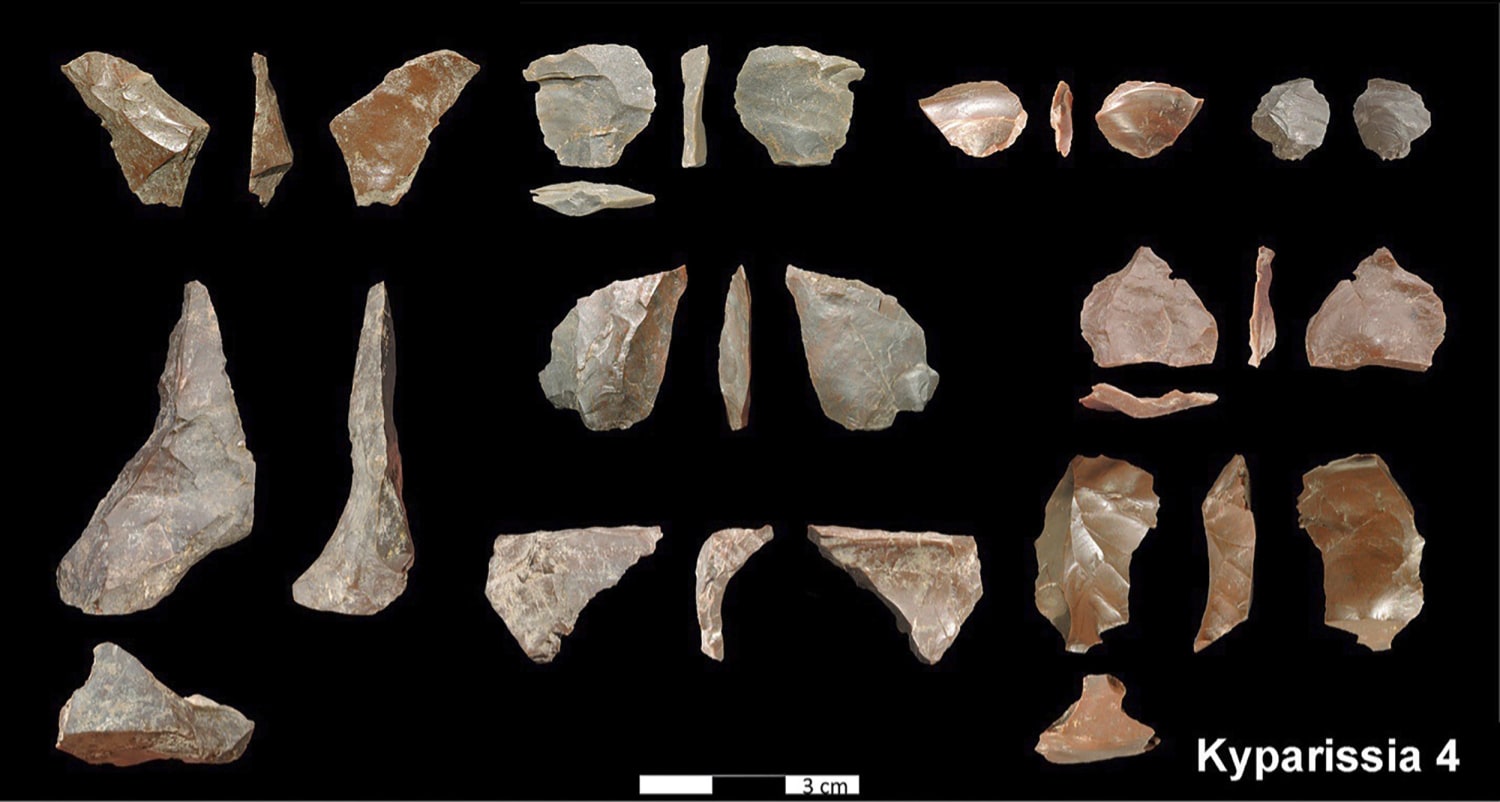Greek Discovery Of Stone Tools In Megalopolis Area Pushes Back Greece’s Archaeological Record Up To 250,000 Years
The five new archaeological sites have been discovered in the Megalopolis lignite mine in southern Greece contain valuable faunal and cultural remains belonging to the country.

Stone tools from the site Kyparissia 4 and Choremi 7. Image credit: YPPOA – Greek Culture Ministry
The sites include the oldest dated archaeological site of the Lower Palaeolithic in Greece (about 700 thousand years ago) , as well as the oldest Middle Paleolithic site in Greece and one of the oldest in Europe (about 280 thousand years ago).
The oldest site identified is Kyparissia 4, which dates back to about 700,000 years ago and is located about 70 meters below the current surface of the ground (before the start of mine operations). The site contains Lower Paleolithic stone artefacts, along with the remains of extinct animals such as giant deer ( Praemegaceros ), hippopotamus, rhinoceros, elephant, and a tooth of the macaque monkey.
Another site located nearby is Kyparissia 3. This site – stratigraphically younger – delivered artifacts in the form of elephant bones associated with stone tools. At the Marathousa 2 site, which dates back to about 450,000 years ago, a part of a hippopotamus skeleton with cut marks was found together with the remains of stone tools, and is a rare example of hippopotamus exploitation in Pleistocene Europe.

Deer skull, as found by country at Kyparissia site 4. Image credit: YPPOA – Greek Culture Ministry
Yet another site – the Tripotamos 4 – is located approximately 15 meters below the current surface, and dates to about 400,000 years before today. At the site, the team unearthed a large concentration of stone tools, which present new elements in stone working techniques compared to older sites, making the site an important point in the technological developments of the late Lower Paleolithic, according to press release.
In the upper part of the geological sequence, about 8 meters below the current surface, there was unearthed the Choremi 7 site, and it is dated to about 280 thousand years.
The stone carving of the site includes typological and technological characteristics of the Middle Paleolithic. The faunal assemblage of the site consists mainly of bone fragments, mainly deer, some of which bear traces of human processing.

The sites Kyparissia 3 and 4 in the stratigraphic sequence of the lignites. . Image credit: YPPOA -Greek Culture Ministry
This discovery of great value was possible thanks to the approved five-year program of surface and geoarchaeological research in Megalopolis of Arcadia. The aim of this research was to find Paleolithic sites in the area.
Now researchers have “unique opportunity to investigate human behavior over time, for an important period in the history of human evolution and in an area that has so far been little investigated.”
The project was directed by Panagiotis Karkanas of the American School of Classical Studies at Athens, Eleni Panagopoulou from the Greek Culture Ministry and Katerina Harvati, a professor of paleoanthropology at the University of Tübingen in Germany.
Related Post
A shocking documentary proves that mermaids do exist
SHOCKING Revelation: Thuya, Mother of Queen Tiye, Was the Grandmother of Akhenaten and Tutankhamun—What Ancient Egyptian Secrets Did She Leave Behind?
Breaking News: Astonishing Discoveries at Karahan Tepe Confirm an Extraterrestrial Civilization is Hiding on Earth, and NO ONE Knows!
Breaking News: Researchers FINALLY Discover U.S. Navy Flight 19 After 75 Years Lost in the Bermuda Triangle!
NASA’s Secret Investigation: Uncovering the Astonishing Mystery of the UFO Crash on the Mountain!
Explosive UFO Docs LEAKED: Startling Proof That Aliens Ruled Ancient Egypt!